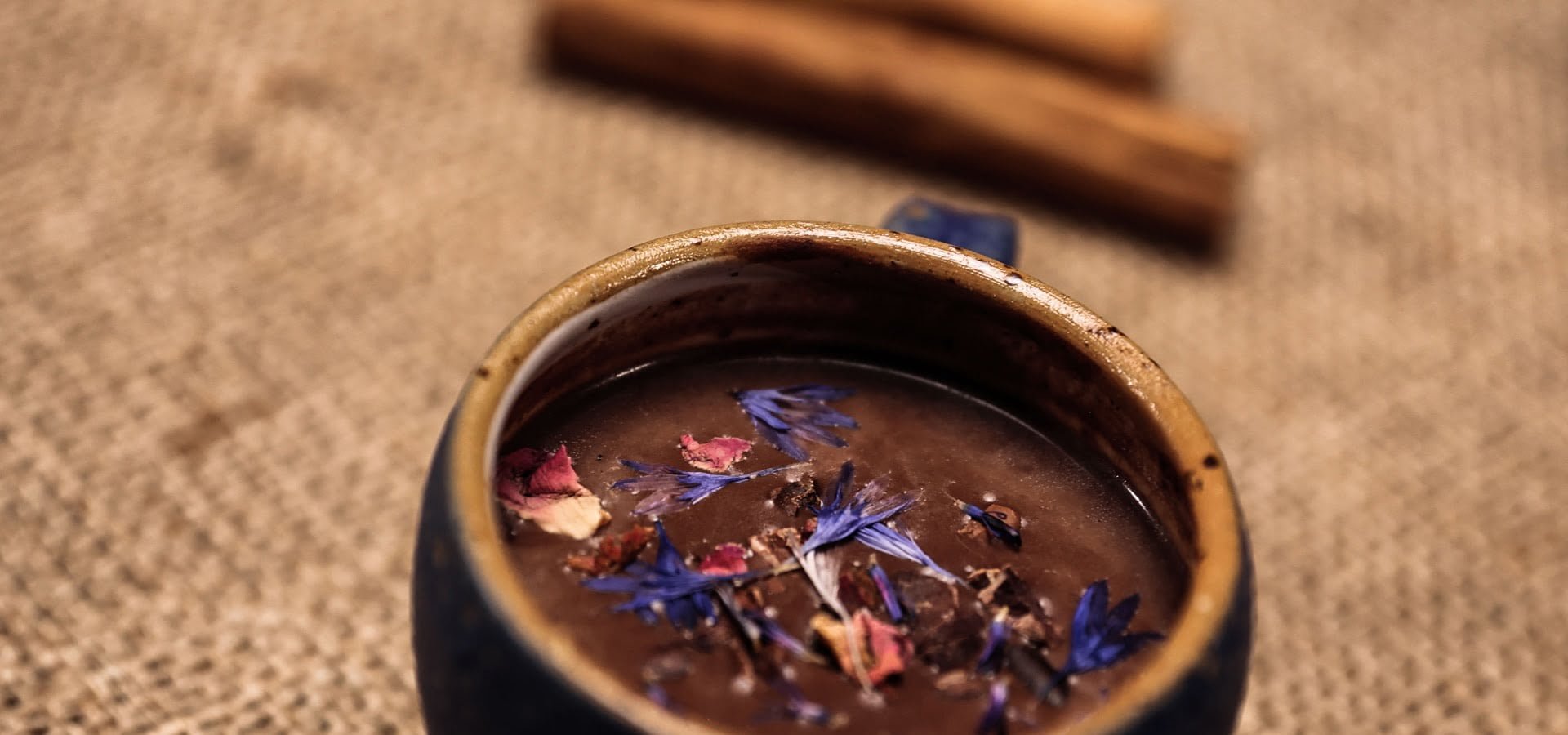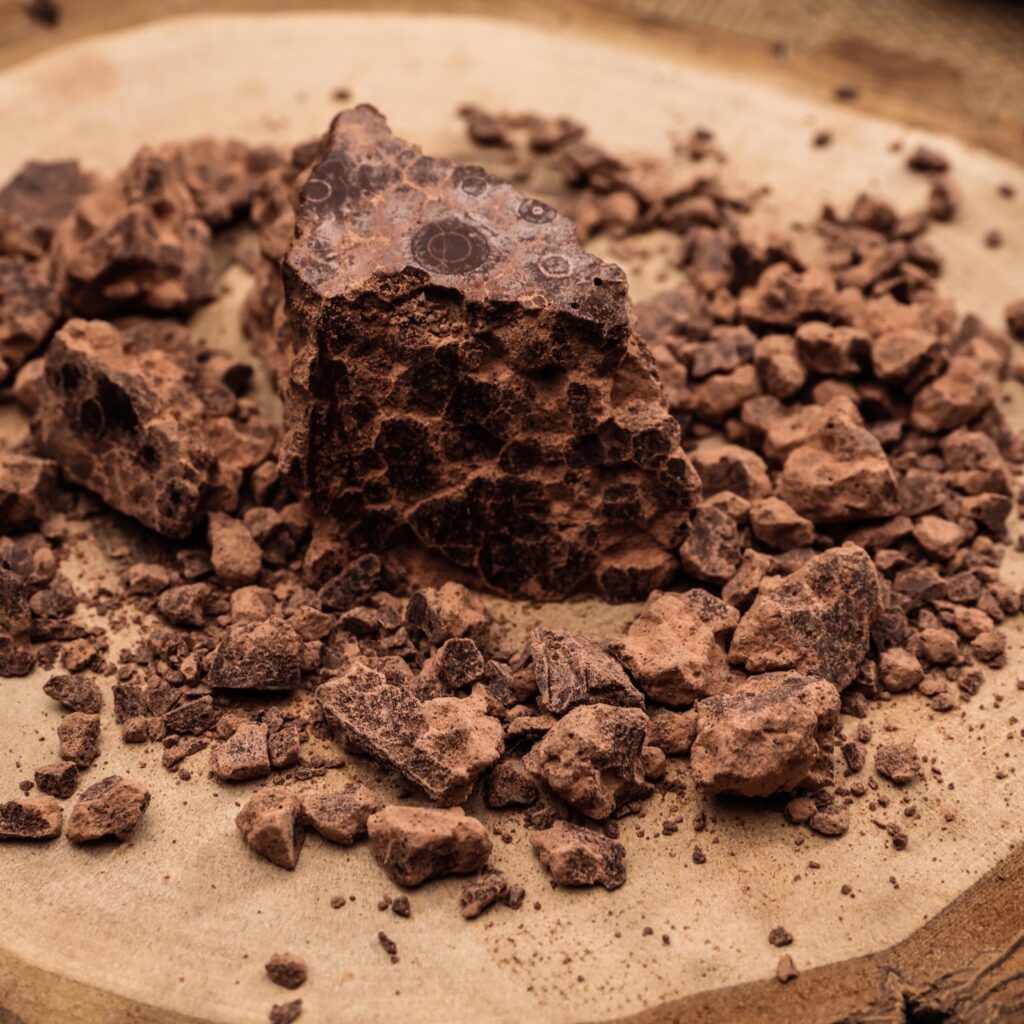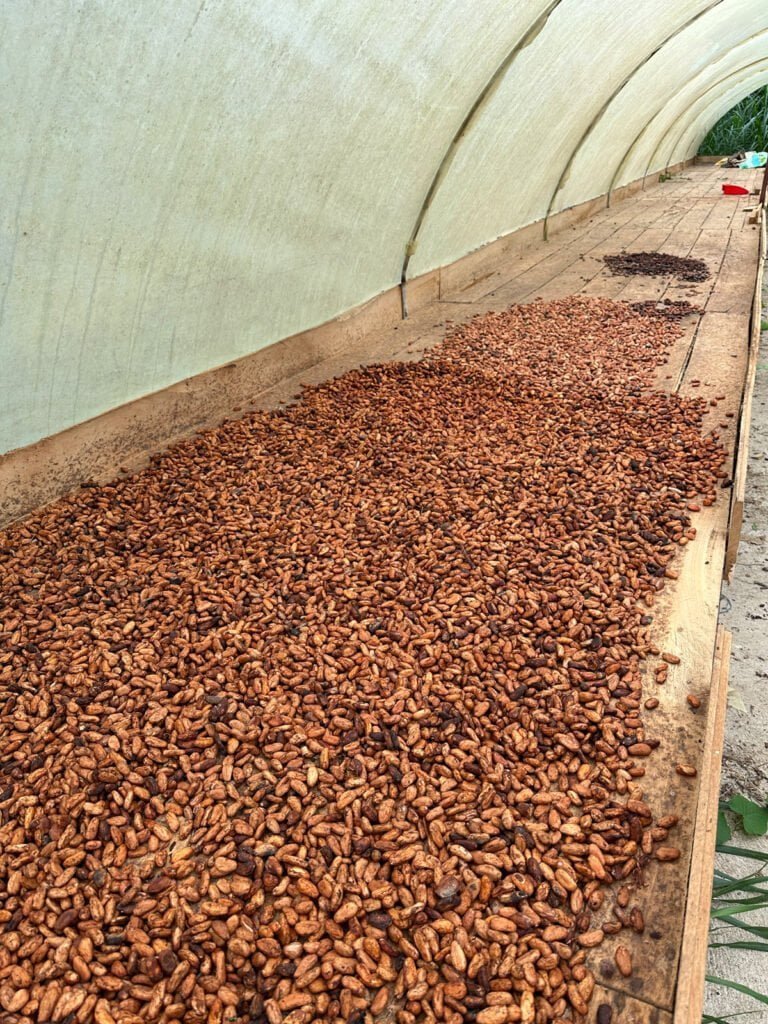Raw cacao – or what kind of cacao is it?

Featured products Learn more about our offer
View productsIs there such a thing as “raw cacao”?
In recent years, the world of healthy eating has gradually reached a consensus regarding so-called “highly processed food”. Namely, that it is, in principle, the worst (“junk”!) type of food. Indeed, as modern medicine indicates, consuming food fried in deep fat, full of saturated fats, and devoid of fibre and vitamins has a negative impact on our digestive system, raises cholesterol, and increases the risk of cardiovascular diseases [1, 2], and perhaps even depression; [3]unprocessed food, on the other hand, such as fruits and vegetables, full of valuable fatty acids from fish, grains, and wholemeal bread, have a beneficial effect on the functioning of many systems in our body. According to the principle of “you are what you eat”, it would seem, therefore, that it is always worth opting for what is unprocessed: fresh, natural, and raw. However, like with any general dietary principle, similar simplifications can lead us astray.
So let’s talk about raw cacao.
Raw cacao, which we wrote about here (link) regarding its health-promoting properties, as an unprocessed product, is a great candidate to make it onto the list of foods worth consuming. Unfortunately, however, there have been some controversies recently regarding the term “raw” in relation to delicious products based on the cocoa fruit. To be more precise, it can be questioned whether products sold under the name “raw cacao” or “cacao paste” are actually raw. And if they are not, are they worth consuming? What does it mean that cacao is raw? Are there raw cacao beans? Is it worth consuming cacao paste? We will explain.


Raw ceremonial cacao from Guatemala
Cacao production process
We’ve written about the process of cacao production here (link), but it’s worth recalling in a nutshell what it exactly involves. Let’s start with the cacao fruit itself, full of precious beans. It is from these beans that soon full-bodied and full-fat cacao will be produced, which – and we can be sure of this – during the process described here will not be seasoned with any additives such as sugar, flavours, or dyes. This also works the other way around: in the production process of raw cacao, no semi-finished products, including naturally occurring fats, are intentionally removed from the beans. However, the beans are subjected to certain procedures that could raise doubts about their “raw” state.
What kind of treatments are these?
Firstly, there is talk of fermentation, which in its traditional form involves wrapping the beans in banana leaves and placing them in a wooden box, where yeast, bacteria, and other microorganisms break down the sugars contained in the seeds. This fermentation would occur anyway – the methods used by cacao producers only help control this process and enhance the final taste of the finished product. However, already at this point, there is some controversy, because according to the popular definition of unprocessed food, it should not be heated to a temperature higher than 48 degrees Celsius [4, 5]. Meanwhile, as Robbie Stout, one of the founders of the Ritual Chocolate company, notes, even in the fermentation process itself, the grains reach temperatures higher than this magic limit. This is also confirmed by other sources [5, 6]. So if fermentation itself takes place in such warm conditions, then what about… roasting!


Drying of cacao beans
Exactly, because the second process to which the beans are subjected after fermentation is roasting – a process that raises the temperature of the seeds to a level much higher than around 50 degrees. However, roasting is an optional process because cacao is always subjected to another treatment, which may be sufficient on its own: drying. Unfortunately, controversies also arise here: according to some cacao producers, unroasted (i.e., only dried) cacao is produced below 48 degrees Celsius; according to others, even drying raises the temperature of the seeds above this limit[4].
Similarly divided opinions exist regarding the grinding of the beans, during which the mere friction raises the temperature of the product. [4]. However, it seems that – whether we want it or not – cacao fermentation itself excludes it from the list of truly raw products. “The only truly raw cocoa,” says Greg D’Alessandre, founder of Dandelion Chocolate, “are cacao beans in the form in which they are taken from the cacao fruit.” However, grains in this condition are at least unpalatable [4] and even inedible [5].
Thus, the above information would indicate that “raw cacao,” sold in the form of paste or roasted seeds, does not exist. Before we make a final judgment, let’s delve a little deeper into the issue.
“Raw” – but what does it really mean?
As Gustavo Cerna, a cacao producer from Nicaragua, points out, the term “raw cacao” has not only stirred confusion among chocolate enthusiasts but is also being used far too loosely nowadays [4]. In reality, it can be said with a high degree of certainty that there is no such thing as truly raw cacao (fit for consumption), and every cacao product is processed to some extent. But does that immediately dismiss cacao paste (ceremonial cacao) and other products available under the name “raw” from the list of foods worth eating?
As noted by producers from Santa Barbara Chocolate, the fact that a product has been fermented and heated to a (relatively) high temperature, then subjected to roasting and drying, may indeed mean that it is no longer “raw,” but it is still… as close to a raw state as possible! [5]This means that when consuming “raw” cacao, we are consuming a product that has only undergone the procedures necessary to make it edible—and nothing more. It’s essential to remember that food can be processed in various ways, and while we may opt for steaming over deep-frying for our health, certain types of food cannot be consumed without undergoing some—even minimal—processing. That being said, it’s worth noting that you can choose to consume cacao that is only dried, rather than roasted. [4]. Additionally, some cacao beans, after fermentation, drying, and grinding, still undergo alkalization. However, this process can strip the product of some of its valuable properties, leading some producers to abandon this part of the processing. [6].
Raw cacao – a matter of definition
While the above considerations suggest that there is no such thing as raw cacao, here at Chocante, we advise caution. Ultimately, it’s challenging to view food in black-and-white terms: food is rarely unequivocally healthy or unhealthy. The same goes for the issue of raw cacao, which is closely tied to health considerations. Cacao may never be truly raw, but that doesn’t necessarily make it not worth eating. On the other hand, if we consider minimally processed food as products subjected only to absolutely necessary processes, cacao paste and other products offered by genuine cacao producers undoubtedly meet this less stringent criterion.
From our own sources, we know that producers themselves lament the confusion surrounding the term “raw cacao,” considering it even as a marketing ploy. Let’s say it again: truly raw cacao is not only unpalatable but also inedible, and may even be harmful: according to some sources, only the roasting process kills the mycotoxins and dangerous bacteria present in fermented beans [8]. and, of course, it gives the food its unique flavour. The offerings for products such as cacao paste and cacao beans for crunching thus include cacao as close to raw as possible. It is “almost raw”cacao [7], edible and safe.
Ultimately, the issue of “rawness” is a matter of definition. If you love raw products and cacao, care about your health, and remember that not all food processing needs to strip it of its valuable properties, real cacao remains a great choice for you. We settle the matter as follows, and perhaps somewhat paradoxically: there is no such thing as raw cacao. Unless you are talking about the most raw cacao possible – and that’s what we strongly recommend!
